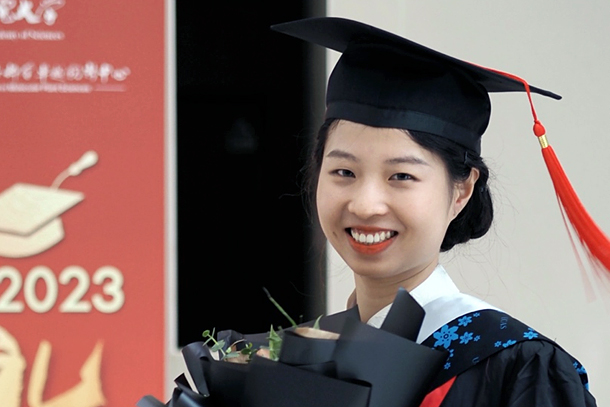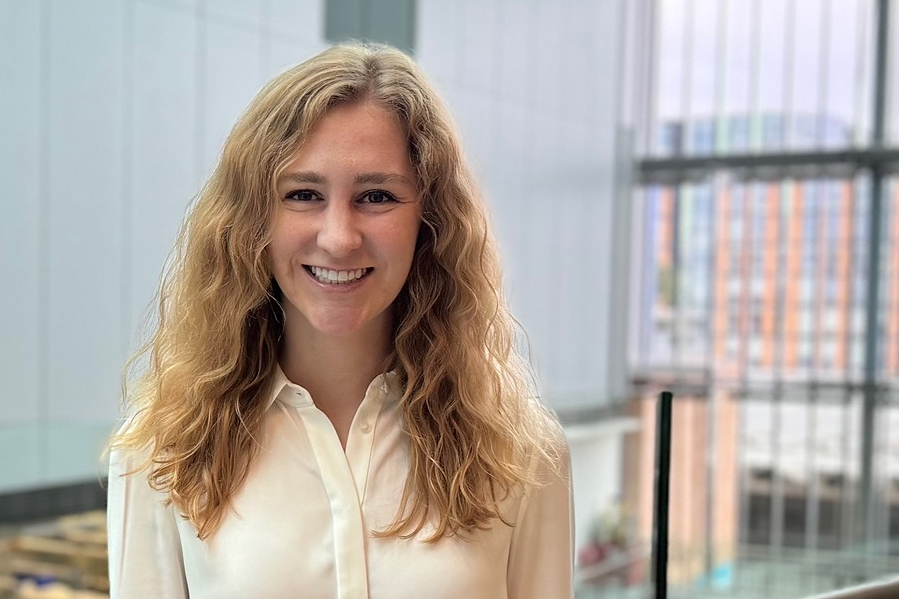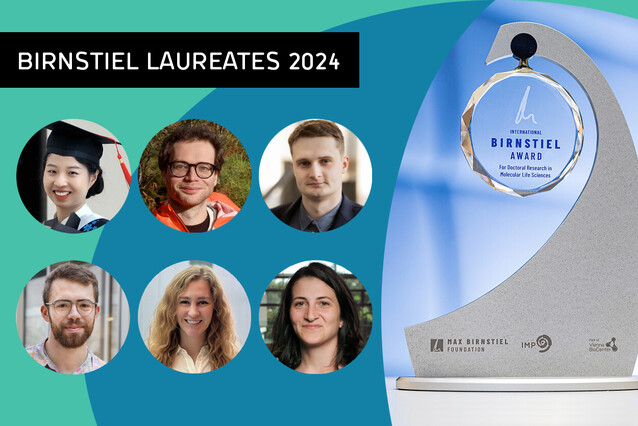Six laureates selected for International Birnstiel Award 2024
For the sixth time since 2019, this year’s six laureates of the International Birnstiel Award for Doctoral Studies in Molecular Life Sciences were announced today. Selected from 105 nominations from around the world, the 2024 awards will be presented to: Kun Huang (CAS Center for Excellence of Plant Molecular Sciences); Alexander Mackintosh (University of Edinburgh); Irmantas Mogila (Vilnius University Life Sciences Center); Luca Schulz (Max Planck Institute for Terrestrial Microbiology); Christina Stankey (The Francis Crick Institute); and Shushan Toneyan (Cold Spring Harbor Laboratory).
The six laureates were selected from 105 nominations from around the world. As in previous years, the selection committee commented on the exceptional quality of nominations – which has made the International Birnstiel Award for Doctoral Studies in Molecular Life Sciences one of the most competitive student research awards there are.
The selection committee also noted that the geographic range of nominations grows: “We see that the reputation of the Birnstiel Award continues to grow and spread. We had more nominations from Asian institutions than in previous years, for example,” said one selection committee member. “With the Birnstiel Award being so competitive, we are not surprised that it is earning more and more prestige, but it is great seeing this reflected in the nominations – the strongest evidence for how exceptional our laureates are.”
The six awardees will receive a certificate, trophy, and prize of 2,000 Euro at a ceremony in Vienna on 6 November 2024. While any academic institution in the world is entitled to submit a nomination, only one nominee per institution or PhD programme is considered for an award. Calls for nominations are advertised every year in May via the IMP’s website, social media, and a designated campaign.
International Birnstiel Award: Laureates of 2024
Selected from 105 nominations, the following six rising star scientists were selected in a multi-step process:

Kun Huang, CAS Center for Excellence of Plant Molecular Sciences
Supervisor: Yu Zhang
The RNA-directed DNA methylation (RdDM) pathway is essential for maintaining genome integrity in plants. Two RNA polymerases—Pol IV and RDR2—are key members of the RdDM pathway. Pol IV and RDR2 are tightly coupled, but the basis for their association was unknown. Kun developed a method to obtain the endogenously assembled Pol IV-RDR2 complex in plant suspension cells. Using cryo-electron microscopy, she then determined the structures of the Pol IV–RDR2 holoenzyme, Pol IV–RDR2 backtracked transcription elongation complex, and Pol IV elongation complexes in four catalytic states. These structures provide atomic details for such a two-RNA-polymerase assembly and describe a “backtracking-triggered RNA channelling” model for dsRNA synthesis by Pol IV-RDR2. Combined with biochemical data, Pol IV is backtracking prone and deficient in the hydrolysis of backtracked RNA, which ensures efficient dsRNA production by Pol IV- RDR2.
Kun Huang studied horticulture at Anhui Agricultural University before joining the Center for Excellence of Plant Molecular Sciences of the Chinese Academy of Sciences for her PhD. Both as undergraduate and graduate student, Kun received honours and merits, including the Special Prize of the President Scholarship of Chinese Academy of Sciences and the election to the UCAS Excellent Student Cadre.
Featured Publication
Huang K., Wu X.-X., Fang C., Xu Z., Zhang H., Gao J., Zhou C.-M., You L.-L., Gu Z.-X., Mu W.-H., Feng Y., Wang J.-W., Zhang Y.:
“Pol IV and RDR2: a two-RNA-polymerase machine that produces double-stranded RNA.”
Science (2021). DOI: 10.1126/science.abj9184

Alexander Mackintosh, University of Edinburgh
Supervisor: Konrad Lohse
Alexander Mackintosh’s PhD research focused on the role of chromosome rearrangements in evolution. He investigated whether rearrangements where chromosomes split apart or join together can lead to the formation of new species. Although we cannot directly observe how new species form, comparing the genomes of current-day species provides information about how they diverged from one another. Alexander Mackintosh analysed genome sequences from a pair of butterfly species whose chromosomes have undergone a large number of rearrangements. By modelling the speciation process along the genome, he could show that rearrangements were associated with a lower rate of gene exchange between the species, promoting their divergence. This research demonstrates that these types of rearrangements do indeed play a role in speciation.
Alexander Mackintosh studied biological sciences with a focus on evolutionary biology at the University of Edinburgh, where he also did his PhD. He is currently a postdoctoral researcher at the University of Upsalla (Sweden).
Featured Publication
Mackintosh A., Vila, R., Laetsch D. R., Hayward A., Martin S. H, Lohse, K:
“Chromosome fissions and fusions act as barriers to gene flow between Brenthis fritillary butterflies.”
Molecular Biology and Evolution (2023). DOI: 10.1093/molbev/msad043

Irmantas Mogila, Vilnius University Life Sciences Center
Supervisor: Gintautas Tamulaitis
Bacteria and archaea use CRISPR-Cas systems to defend against viral infections. Type III CRISPR-Cas systems target viral RNA through Csm complexes, which also produce cyclic oligoadenylates (cOA) to activate additional defense proteins. For his doctoral research, Irmantas Mogila studied the regulation of type III CRISPR-Cas systems and revealed that Csm complexes remain in activated state for prolonged timeframes once triggered by target RNA. Additionally, he characterized an ancillary effector, Cami1. Activated by cOA, Cami1 halts protein production in the infected cell by cleaving ribosome-bound mRNA, coupling CRISPR-Cas defence with translation inhibition. These findings provide insights into the complex regulatory mechanisms of CRISPR-Cas and illustrate the diversity of antiviral defence pathways.
Irmantas Mogila studied biochemistry at the University of Vilnius (Lithuania) for his undergraduate and Master’s studies. Studies and trainings abroad took him to EMBL-EBI in Hinxton (United Kingdom) and Leipzig (Germany).
Featured Publication
Mogila, I.; Tamulaitiene, G.; Keda, K.; Timinskas, A.; Ruksenaite, A.; Sasnauskas, G.; Venclovas, C.; Siksnys, V.; Tamulaitis, G.:
“Ribosomal stalk-captured CARF-RelE ribonuclease inhibits translation following CRISPR signaling.”
Science (2023). DOI: 10.1126/science.adj2107

Luca Schulz, Max Planck Institute for Terrestrial Microbiology
Supervisor: Tobias Erb
In his research, Luca Schulz investigated how Rubisco – the carboxylase of photosynthesis – evolved to better distinguish carbon dioxide and oxygen. His research revealed that the recruitment of a new subunit was essential for improving the protein’s specificity. This newly recruited subunit is essential for all Rubiscos that interact with it, which hindered previous studies on its function. Instead of examining the interaction in present-day proteins, Luca reconstructed the subunit’s emergence step by step in the laboratory. This shed light on the functional consequences of complexification, while circumventing problems associated with dependencies. In addition, this model system helped answer how and why proteins can become dependent on newly recruited subunits during their evolution.
Luca Schulz studied biology at the University of Marburg (Germany) before a Master’s in biological chemistry at ETH Zurich (Switzerland). He then joined the MPI for Terrestrial Microbiology in Marburg. Luca is now a postdoctoral researcher at the University of Manchester. Among other honours, Luca was presented with the PhD award of the German Society for Biochemistry and Molecular Biology and is an EMBO Postdoctoral Fellow.
Featured Publication
Schulz L., Guo Z., Zarzycki J., Steinchen W., Schuller J.M., Heimerl T., Prinz S., Müller-Cajar O., Erb T.J., Hochberg G.K.A:
“Evolution of increased complexity and specificity at the dawn of Form I Rubiscos”.
Science (2022). DOI: 10.1126/science.abq1416

Christina Stankey, The Francis Crick Institute
Supervisor: James Lee
Nearly one in 20 people live with an autoimmune or inflammatory disease. Better treatments are urgently needed, but drug development is slow because we do not fully understand why these diseases develop. For her PhD research, Christina Stankey used genetics to identify novel mechanisms of disease. While studying a genetic region linked to multiple inflammatory diseases, she found a super-enhancer that controls expression of the gene ETS2 in macrophages. Christina discovered that ETS2 is a master regulator of macrophage inflammatory responses. She further showed that ETS2 drives inflammation in diseased tissues, and that existing drugs could be repurposed to target the ETS2 pathway. This work highlights how genetics can generate insights into disease biology and provide therapeutic opportunities.
Christina Stankey studied Molecular, Cellular and Developmental Biology at Yale University (United States), before relocating to the United Kingdom, where she did a Master’s in translational biomedicine at the University of Cambridge. She then took up medical studies at Washington University in St. Louis, which she intermitted for her PhD research at the Francis Crick Institute (London, UK). Christina received numerous awards and merits, including graduating summa cum laude from Yale University.
Featured Publication
Stankey, C.T., Bourges, C., Haag, L.M., Turner-Stokes, T., Piedade, A.P., Palmer-Jones, C., et al.:
“A disease-associated gene desert directs macrophage inflammation through ETS2.”
Nature (2024). DOI:10.1038/s41586-024-07501-1

Shushan Toneyan, Cold Spring Harbor Laboratory
Supervisor: Peter Koo
The Cells in an organism contain the same genetic information but have diverse identities. This is mainly due to differential gene expression which is controlled through regulatory elements and epigenetic modifications. Many diseases, such as cancer, are linked to dysregulation of expression. However, knowledge about the identities of these elements and their role on gene regulation is incomplete. To address this, deep learning models can map sequences to epigenetic functions. While such models are great at finding complex patterns in the data, they are not transparent – it is not clear why they make a given prediction. Shushan's research focused on facilitating deep learning model creation and developing an explainability method to uncover what models learn about the regulatory elements and their interactions.
Shushan Toneyan studied biological sciences at the University of Oxford, followed by a Master’s in bioinformatics and computational biology at the University of Bern (Switzerland). She then pursued her PhD at Cold Spring Habor Laboratory (United States). She is currently a postdoctoral fellow with Roche in Zurich (Switzerland). Shushan’s awards and honours include a Reach Oxford Scholarship and a Gulbenkian Grant.
Featured Publication
Toneyan, S., Koo, P. K.:
“Interpreting Cis-Regulatory Interactions from Large-Scale Deep Neural Networks for Genomics.”
Nature Genetics (2024), DOI: 10.1038/s41588-024-01923-3
Honourable Mentions
As in previous years, the selection committee faced a high number of outstanding nominations, and many strong candidates could not be acknowledged with an award. The selection committee highlighted an additional nine scientists from the shortlist as "honourable mentions" to give them special recognition:
Christian Baca, The Rockefeller University
Research field: CRISPR-Cas immunity
Supervisor: Luciano Marraffini
Federico Cerullo, Zentrum für Molekulare Biologie der Universität Heidelberg (ZMBH)
Research field: Ribosome quality control
Supervisor: Claudio Joazeiro
Pascal Devant, Harvard University
Research field: Innate immunity
Supervisor: Jonathan Kagan
Leonard Ernst, Max Planck Institute for Terrestrial Microbiology
Research field: Biochemistry
Supervisor: Johannes Rebelein
Pinki Gahlot, University of Duisburg-Essen
Research field: Cell biology
Supervisor: Hemmo Meyer
Benjamin Hale, ETH Zurich
Research field: Systems immunology
Supervisor: Berend Snijder
Jagannath Maharana, Indian Institute of Technology, Kanpur
Research field: Structural biology
Supervisor: Arun Shukla
David Mayo Munoz, University of Otago
Research field: CRISPR conflict
Supervisor: Peter Fineran
Zeynep Okur, University of Basel
Research field: Neurobiology
Supervisor: Peter Scheiffele
About Max Birnstiel and the Birnstiel Foundation
Max Luciano Birnstiel (1933 – 2014) was a molecular biologist and founding director of the Research Institute of Molecular Pathology (IMP). In this role, he made a major contribution to the exceptional academic standing of the IMP. He retired from his post as director in 1996.
Birnstiel’s research focused on gene regulation in eukaryotes. His lab was the first to purify single genes, the ribosomal RNA genes from the frog Xenopus laevis, in the late 1960s. Birnstiel was one of the first scientists to study how gene expression is regulated. He is also recognised for one of the earliest discoveries of a gene enhancer element, which his lab published in 1980. As a science manager, Birnstiel was a visionary who not only set the IMP on track to achieving research excellence, but he was also a vital force behind raising the profile of the Vienna BioCenter, now one of Europe’s most dynamic life science hubs with more than 2,800 people from 80 countries, working in over 135 research groups and more than 35 biotech companies.
Throughout his life, Max Birnstiel was a supporter of young talent and fostered an egalitarian culture at the IMP. It was in this spirit that a foundation bearing his name was set up in 2018. The Max Birnstiel Foundation co-funds initiatives and activities that support young scientists in molecular life sciences, such as the Vienna BioCenter Summer School and the International Birnstiel Award for Doctoral Studies in Molecular Life Sciences. ww.maxbirnstiel.org, www.imp.ac.at/birnstiel-award
See these and all past awards...
